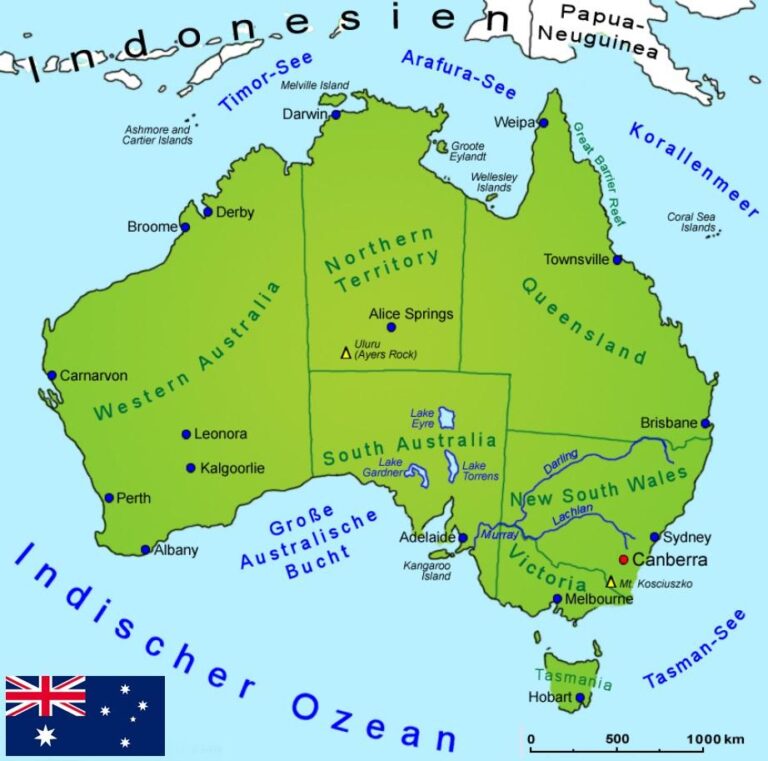Australia has emerged as the dominant power in the Pacific region, surpassing China as the United States scales back its presence, according to a new analysis by the Lowy Institute. The shift signals a significant realignment in geopolitical influence across the strategically vital island nations, as Canberra steps into a leadership void left by Washington’s retrenchment. This development could reshape the balance of power in the Indo-Pacific, with profound implications for regional security, economic ties, and diplomatic relationships.
Australia Expands Influence in the Pacific Amid US Strategic Withdrawal
Australia’s growing footprint in the Pacific marks a significant pivot in regional power dynamics, capitalizing on the perceived strategic retreat of the United States. By boosting diplomatic ties, expanding development aid, and increasing military cooperation, Canberra has positioned itself as the primary external partner for island nations seeking economic growth and security assurance. This intensification of influence is underscored by a series of high-level visits, infrastructure investments, and environmental initiatives designed to address both immediate needs and long-term resilience.
Key elements driving Australia’s expanded role include:
- Strategic aid packages targeting climate adaptation and sustainable development.
- Enhanced defense agreements with regional partners, strengthening maritime security.
- Investment in digital connectivity to foster economic integration and regional cooperation.
- Multilateral engagements through forums like the Pacific Islands Forum to promote shared regional interests.
| Country | Australian Aid (2023, AUD million) | Security Cooperation |
|---|---|---|
| Fiji | 120 | Joint military exercises |
| Papua New Guinea | 95 | Border patrol enhancement |
| Solomon Islands | 80 | Coast guard training |
China’s Pacific Ambitions Face New Regional Dynamics
As America reduces its footprint in the Pacific, Australia has swiftly stepped into the vacuum, reshaping the regional balance of power. Canberra’s enhanced engagement-marked by increased aid, infrastructure investments, and security partnerships-is signaling a strategic pivot that challenges China’s longstanding ambitions. This recalibration reflects Canberra’s intent to assert itself as the primary external partner for Pacific island nations, leveraging shared values and geographic proximity to outmaneuver Beijing’s expanding influence.
Recent developments underscore a more nuanced and competitive environment, where Pacific countries are increasingly asserting agency amid superpower jockeying. Key factors driving this shift include:
- Enhanced Australian diplomatic presence: More frequent high-level visits and new regional forums.
- Targeted economic investments: Focus on sustainable development and climate resilience projects.
- Security cooperation: Expanded joint exercises and maritime surveillance alongside Pacific island nations.
| Country | Australian Investments (2023) | Chinese Investments (2023) |
|---|---|---|
| Fiji | USD 120M | USD 105M |
| Papua New Guinea | USD 90M | USD 110M |
| Solomon Islands | USD 75M | USD 80M |
| Vanuatu | USD 60M | USD 50M |
Strategic Recommendations for Strengthening Pacific Partnerships and Countering Geo-Political Risks
To enhance alliances in the Pacific amid shifting geopolitical tides, Australia must leverage its regional expertise and prioritize sustainable development initiatives. Strengthening economic aid, expanding infrastructure investment, and fostering cultural diplomacy are critical pathways to solidifying trust and influence among Pacific Island nations. Additionally, targeted support in climate resilience and maritime security will not only address immediate regional vulnerabilities but also position Australia as a dependable partner, contrasting the transactional nature of other external actors.
Countering escalating geopolitical risks requires a multi-layered strategy rooted in genuine partnership and respect for sovereignty. Collaborative frameworks emphasizing transparency, joint capacity-building, and shared intelligence can mitigate the risks posed by external powers seeking footholds. Below is a summary of strategic actions essential for Australia’s continued leadership in the Pacific:
| Strategic Focus | Key Actions | Outcomes |
|---|---|---|
| Economic Engagement | Increase development funds & support local SMEs | Boosted regional economies & local empowerment |
| Security Cooperation | Joint maritime patrols & intelligence sharing | Enhanced regional stability & threat detection |
| Cultural Exchange | Scholarships, arts programs, and language initiatives | Deepened mutual understanding & goodwill |
| Climate Action | Funding renewable projects & disaster preparedness | Increased resilience & reduced vulnerability |
Insights and Conclusions
As Australia steps confidently into a leadership role in the Pacific, filling the void left by a retreating America, the geopolitical landscape of the region is unmistakably shifting. The Lowy Institute’s analysis underscores how Canberra’s increased engagement and influence signal a new chapter in Pacific affairs-one where Australia emerges not just as a regional power, but as a pivotal player shaping the future of the Pacific amid evolving global dynamics.




